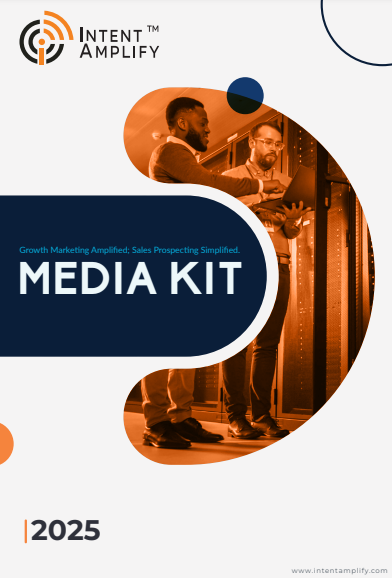
Appointment Setting vs. Lead Generation: Which Delivers Higher ROI in B2B?
- Last updated on: July 15, 2025
Every dollar spent on marketing is under the microscope. Leaders don’t want traffic—they want traction. And when pipeline efficiency defines success, marketers are asking the real question: What drives more ROI – appointment setting or lead generation?
This isn’t a debate about tactics. It’s about choosing the revenue engine that fuels faster sales, better-qualified prospects, and higher win rates. Appointment setting gets you in the room. Lead generation fills the room. But which one converts better, faster, and more predictably in 2025? This article breaks down the core differences, ROI potential, and use cases to help you invest where results scale.
Defining the Difference: Appointment Setting vs. Lead Generation
Appointment setting and lead generation are different. Lead generation has a broader reach. It encompasses bringing in and gathering contact details from leads who express some interest in your product or service. Consider gated content downloads, ad clicks, or form submissions – these are standard outputs of a lead-gen campaign. Yet, these leads need serious nurturing before they’re ready to talk to sales.
On the other hand, appointment setting is a more focused, bottom-funnel approach. It’s about finding qualified leads, connecting with them directly, and scheduling decision-maker meetings. It’s not about quantity – it’s about accuracy. Appointment setters are an extension of your sales force, guaranteeing that every scheduled meeting has value.
It is crucial to understand the difference. Appointment setting drives deals; lead generation establishes awareness. Your ROI is based on how effectively you utilize each within its context, not on how hard you push one versus the other.
The Role of Quality vs. Quantity in ROI Outcomes
When it comes to ROI, not every lead is created equal. A database of unqualified contacts may make an impressive-looking number, but until those leads turn into revenue, they’re nothing more than digital junk. This is where appointment setting vs. lead generation takes a crucial turn: one focuses on quantity, the other on intent.
Lead generation tends to return thousands of leads, but these typically need to be segmented, nurtured, and scored. Many will not convert. Appointment setting screens out noise upfront. With custom outreach and qualification guidelines, only those prospects that fit your ideal customer profile (ICP) are brought along.
In brief, lead generation can win on quantity, but appointment setting wins on efficiency of conversion. A salesperson’s time is precious – each meeting must be worthwhile. The fewer, the better-qualified conversations tend to yield more powerful close rates, and that’s what raises ROI.
B2B Sales Funnel Fit: Where Each Strategy Shines
Each phase of the B2B sales funnel calls for a different touch. Lead generation works best at the front end – establishing awareness, educating the market, and stimulating interest. It clogs the funnel, lays the groundwork, and helps to nurture in the long term. For businesses looking to reach more or move into new verticals, lead gen is crucial.
But in the middle and bottom of the funnel, the story differs. That is where appointment setting comes into play. It is what transitions prospects from interest to action. By qualifying intent and opening a one-on-one dialogue, appointment setting enables sales teams to prioritize only the most viable opportunities.
If your pipeline is thin at the top, lead generation builds volume. If your pipeline is clogged with cold leads, appointment setting cuts through the clutter. The ROI depends on where the friction lies in your funnel.
Cost per Acquisition: Breaking Down the Financials
ROI doesn’t just consider revenue – it factors in cost. So let’s examine appointment setting vs. lead generation through the lens of cost per acquisition (CPA). On paper, lead generation usually looks cheaper. A content asset or paid ad can bring in dozens of leads at a relatively low cost per form fill. But that’s a narrow view.
When you consider the time and resources needed to nurture, qualify, and convert those leads, the actual cost climbs quickly. Many leads fall through the cracks, inflating your true CPA.
Appointment setting, while more expensive upfront, often results in lower acquisition costs long-term. Why? Because the meetings booked are more likely to convert. By skipping the lengthy nurturing cycle, you shorten time-to-revenue and reduce sales friction. If you’re measuring CPA from awareness to close, appointment setting frequently wins in ROI terms.
Speed to Revenue: Which Drives Faster Conversions?
Speed matters. A faster pipeline means faster revenue, and in competitive B2B environments, timing can determine whether you close the deal or lose it. In this context, appointment setting vs. lead generation becomes a race. Lead generation is a slow burn. A lead might engage with your content today and become sales-ready six months later – if at all. While nurturing automation can help, the lag still exists.
Appointment setting skips the period of waiting. It connects your sales team directly with prospects who are ready to talk now. Instead of drip campaigns, you get real conversations. Instead of chasing interest, you chase intent. For companies under pressure to hit quarterly targets or launch new offerings, appointment setting accelerates outcomes. It compresses the sales cycle and delivers faster ROI, especially for high-ticket B2B solutions.
How Personalization Impacts ROI in Both Models
Buyers expect relevance. A generic whitepaper blast or templated LinkedIn message won’t cut it. That’s why personalization is a critical variable in the appointment setting vs. lead generation equation. Lead generation campaigns often struggle with personalization at scale. Yes, you can segment audiences and tailor messaging, but the level of customization is limited. As a result, many leads fail to engage meaningfully.
Appointment setting, by contrast, thrives on personalization. Scripts are tailored to the company’s needs, outreach is often done one-to-one, and messaging speaks directly to decision-makers’ pain points. This hyper-targeted approach builds trust early, increasing both response and conversion rates.
The ROI uplift from personalized outreach isn’t a theory – it’s proven. In 2025, B2B buyers ignore cold automation but respond to tailored value. Appointment setting leverages this behavior, and it shows in the pipeline results.
Which Approach Aligns with 2025 B2B Buyer Behavior?
B2B buyers in 2025 don’t behave like they did five years ago. They’re informed, independent, and risk-averse. They prefer self-guided research but also expect fast, personalized engagement when they’re ready to evaluate solutions. In this environment, which strategy better aligns – appointment setting or lead generation?
That’s why companies with dedicated appointment-setting teams see up to 40% higher close rates compared to those relying solely on lead quantity (Rain Group). It’s not about more leads – it’s about better ones.
Lead generation matches the early discovery phase. It feeds the modern buyer’s need for content and control. But when that buyer is ready to move forward, they want an immediate, human connection – not a string of follow-up emails.
Appointment setting responds to that readiness. It meets the modern buyer where they are: informed, but in need of validation. That validation comes through conversations, not collateral. As buying committees grow and decisions become more complex, appointment setting builds the confidence required to convert interest into action.
Top Industries Benefiting from Appointment Setting
While both strategies serve various sectors, some industries consistently generate higher ROI through appointment setting. These include:
- SaaS & Tech: With complex offerings and high-ticket contracts, booking qualified demos fast is essential.
- Healthcare & MedTech: Compliance-heavy and relationship-driven, this industry thrives on one-to-one outreach.
- Manufacturing & Industrial B2B: Reaching procurement heads directly speeds up long deal cycles.
- Professional Services: From legal to finance, services sell best through trust-building conversations.
These sectors require not just visibility, but qualified engagement. For them, appointment setting isn’t just a tactic – it’s a pipeline necessity.
When to Use Lead Generation Over Appointment Setting
Lead generation still plays a critical role, particularly for:
- Brand Awareness: When you’re new to a market or launching a new solution, lead gen builds visibility.
- List Building: For nurturing sequences and audience development, content-led lead gen offers long-term value.
- SEO Growth: Organic lead generation through blogs and guides drives inbound performance and lowers dependency on paid channels.
- Broad Campaigns: If you’re targeting multiple verticals or regions, lead gen offers flexibility at scale.
In essence, lead generation lays the foundation. Without it, your outbound efforts have no support system. But relying on it exclusively limits your ability to convert high-intent buyers quickly.
Combining Both for a Full-Funnel ROI Strategy
This isn’t a zero-sum game. The most successful B2B organizations in 2025 don’t choose between appointment setting vs. lead generation – they integrate both into a unified revenue strategy.
Here’s how it works:
- Use lead generation to build awareness and grow your email lists.
- Score those leads based on engagement, ICP fit, and behavior.
- Deploy appointment setters to target warm leads and book meetings directly.
- Feed feedback from the sales team back into marketing to refine messaging and targeting.
This closed-loop approach ensures that no lead is wasted, and every sales conversation is timely and relevant. The result? Higher ROI across every stage of the funnel.
Metrics That Matter: How to Measure ROI for Each Strategy
If you’re comparing appointment setting vs. lead generation solely on lead volume, you’re missing the bigger picture. True ROI lies in measuring the right metrics—those that tie directly to pipeline progression and closed revenue.
For lead generation, key performance indicators (KPIs) include cost per lead (CPL), conversion rate from MQL to SQL, and lead-to-opportunity ratio. These help evaluate the top-of-funnel impact but often miss the end goal: revenue.
Appointment setting, on the other hand, is better assessed through metrics like meeting-to-opportunity rate, opportunity-to-close ratio, and average deal size. Since each appointment reflects a qualified opportunity, the path to revenue is more measurable and immediate.
Tracking these distinct sets of KPIs ensures that your strategy aligns with ROI, not just activity. Focus on outcomes, not outputs, and you’ll choose the right model for your B2B goals.
Choosing the Right Partner for B2B ROI Growth
If you’re serious about ROI, you need a partner who doesn’t just deliver leads or appointments, but outcomes. At Intent Amplify, we combine deep industry knowledge with intelligent targeting to help you convert conversations into contracts.
Whether you need top-funnel lead generation or bottom-funnel appointment setting, our solutions are built to move the revenue needle. We align with your sales goals, customize every outreach touchpoint, and ensure your team only speaks with decision-makers ready to buy. Ready to turn outreach into opportunities? Let’s talk. Discover how Intent Amplify can become your growth partner in 2025 and beyond.
Focused Strategy, Higher Returns
Choosing between appointment setting vs. lead generation isn’t about which is better universally; it’s about which is better for your goals right now. Appointment setting delivers faster, more qualified conversions. Lead generation builds long-term visibility and audience trust. When used together strategically, they create a flywheel of consistent ROI. Know your funnel. Know your buyer. And choose the model that delivers, not just leads, but lasting results.
FAQs
1. What is the difference between lead generation and appointment setting?
Lead generation attracts potential customers through content, ads, or forms. Appointment setting directly books meetings with qualified prospects. Lead gen fills the funnel; appointment setting moves deals forward.
2. Which strategy has better ROI for B2B companies in 2025?
Appointment setting often delivers faster ROI due to its direct impact on sales conversions. However, lead generation supports long-term growth and brand awareness. The best ROI comes from integrating both.
3. Is appointment setting more expensive than lead generation?
It can be upfront, but the cost per closed deal is often lower because of higher conversion rates. You’re paying for quality, not quantity, which makes it a smart ROI choice.
4. When should a B2B business choose lead generation over appointment setting?
When launching new products, expanding into new markets, or building brand awareness, lead generation is essential. It helps create a strong base for future outreach.
5. Can I use appointment setting without prior lead generation?
Yes, but it’s more effective when supported by lead generation data. Using insights from previous campaigns helps appointment setters target and personalize their outreach more effectively.






